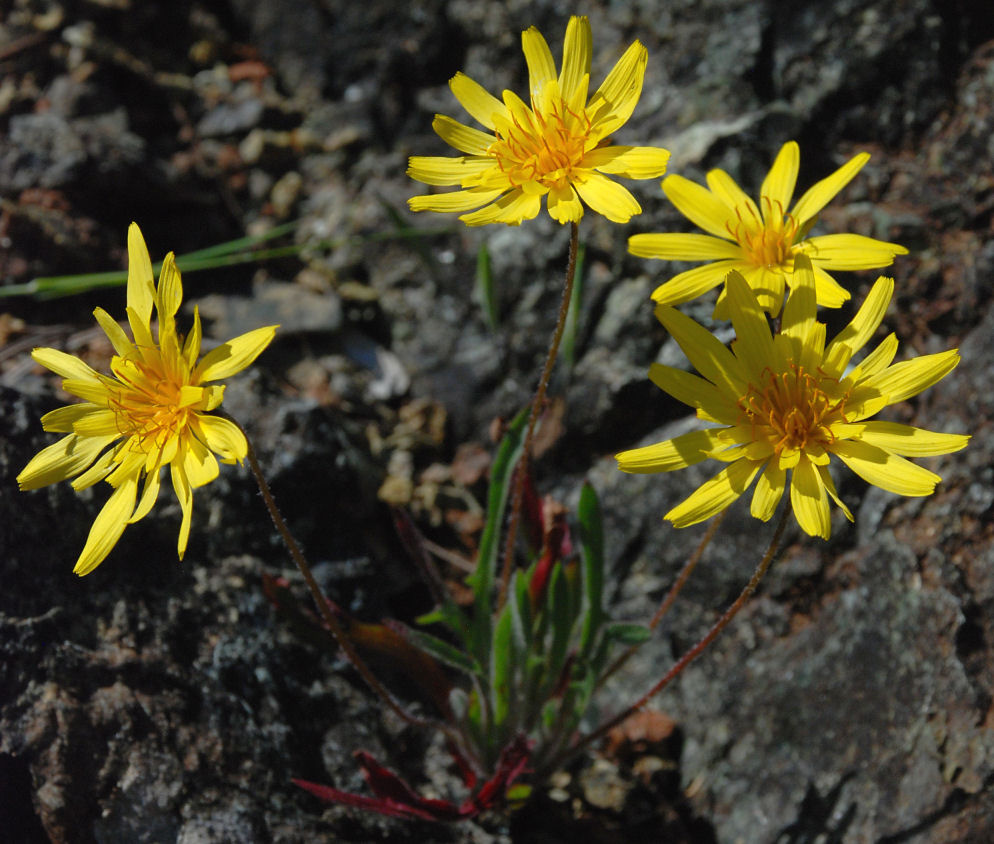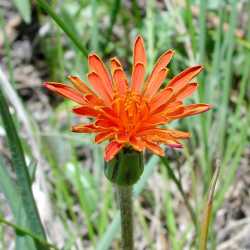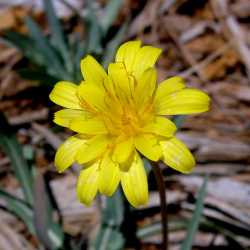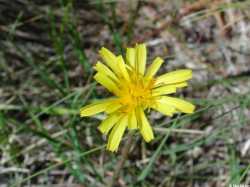Annuals (A. heterophylla) or perennials, (2-)5-60(-96) cm (usually acaulescent); taprooted or with caudices. Stems usually 0, sometimes 1-5+, erect to decumbent, simple. Leaves usually basal (in rosettes), sometimes cauline; petiolate (petioles often purplish, erect to prostrate, ± sheathing); blades linear-lanceolate to spatulate, margins entire or toothed to pinnatifid (sometimes variable on same plant, lobes 2-11 pairs, opposite, subopposite, or irregular, filiform to spatulate, often each with 1, acroscopic, basal lobule, lobules ± triangular, inconspicuous to equaling lobes, faces glabrous and glaucous or pubescent to tomentose). Heads borne singly (erect at end of peduncles). Peduncles not inflated distally, usually ebracteate. Calyculi 0. Involucres cylindric to hemispheric, 2-20(-60) mm diam. (bases often broadening in fruit). Phyllaries 10-50 in 2-5(-7) series, green or medially rosy purple and often with purple-black midstripes, apices, or spots, rarely nearly all black, narrowly lanceolate to broadly ovate or obovate, unequal to subequal, ± herbaceous, margins usually entire (rarely dentate), sometimes scarious, glabrous or ciliate to lanate, apices obtuse to acuminate, faces glabrous or pubescent to tomentose, often stipitate-glandular, (outer appressed to squarrose, often adaxially hairy (at least on apices), not elongating after flowering; inner erect, adaxially glabrous, often puberulent apically, sometimes elongating in fruit). Receptacles flat, pitted, glabrous, rarely paleate (paleae linear-lanceolate, 15-20 mm, ± acuminate, similar to inner phyllaries, ± accrescent). Florets 5-500 (± matutinal); corollas yellow (outermost often with purplish abaxial stripe (often drying whitish, purple stripe still evident), or orange, pink, red, or purple (usually drying purple). Cypselae monomorphic or dimorphic (outermost differing in color, texture, vestiture, and/or shape from inner), white or tan to dark purple, columnar to fusiform, narrowly conic, or obconic (2-10 mm), ribs usually 10, faces glabrous or pubescent to hirsute, beaked (beak lengths 0.1-4 times bodies); pappi persistent, of 50-125, distinct, white, subequal, ± barbellate (sometimes flattened) bristles in 1-6 series. x = 9.
Agoseris consists of widespread species that individually exhibit great morphologic plasticity. Difficulty in correctly identifying individual specimens is compounded by traits that may vary from region to region, the perpetuation of misleading or inaccurate traits in the literature, and the presence of intermediates. Correct identification of Agoseris specimens can be assisted by knowing that species may exhibit variable traits (e.g., pubescence, corolla color, cypsela morphology), some species have leaf lobing variable on single plants (e.g., outermost entire versus inner lobed), and intermediate specimens may occur with any sympatric taxa. Hybridization among members of the genus is common, especially among polyploid taxa, and some hybrid populations appear to be persistent. Autogamy has been demonstrated in some species (K. L. Chambers 1963) and is suspected in others. It appears to be correlated with a reduction in corolla and anther size. Autogamous populations or taxa often exhibit seemingly unique features that appear localized. Attempts at naming these variant populations or regional phases have resulted in a large number of synonyms.
Agoseris has a New World, amphitropical distribution. All of the species are restricted to North America except A. coronopifolia (D´Urville) K. L. Chambers, which is found in temperate regions of southern South America. The South American disjunction appears to be the result of long-distance dispersal from North America (K. L. Chambers 1963).
Agoseris appears to be most closely related to Nothocalaïs.
Fls all ligulate and perfect, ±numerous, yellow or occasionally orange-red, often turning pinkish or purple in age or in drying; invol campanulate, its bracts imbricate or subequal; achenes oblong or linear, terete or angular, ca 10-nerved, commonly narrowed to an indurate whitish base, distinctly beaked at the tip when mature; pappus of numerous capillary bristles; taprooted lactiferous scapose herbs with entire to pinnatifid basal lvs and medium-sized to large solitary heads. 7, w. U.S., 1, S. Amer.
Gleason, Henry A. & Cronquist, Arthur J. 1991. Manual of vascular plants of northeastern United States and adjacent Canada. lxxv + 910 pp.
©The New York Botanical Garden. All rights reserved. Used by permission.












